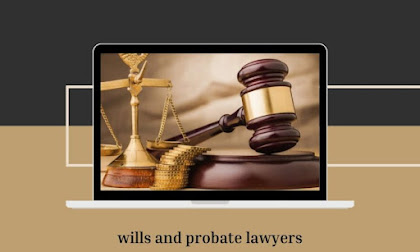Protecting Your Assets: wills and probate lawyers
Since no two families are precisely alike, the following factors should be taken into account when you choose the distribution method that best fits your needs, beliefs, and objectives.
It’s not always easy to decide how to allocate your assets to your beneficiaries when evaluating your estate plan with the wills and probate lawyers. You must consider how and when the beneficiaries can receive their inheritance in addition to deciding how to distribute assets among heirs and make sure that these conditions are spelled out in your estate planning paperwork.
Every circumstance is different when it comes to estate planning, so what works for one family might not work for another. There is no right or wrong method to distribute an estate, but there are a few things to take into account to assist you choose the approach that best suits your needs, beliefs, and objectives.
Wealth Management should come first:
Examining your total wealth management and developing a strategy that will assist you in assembling the resources required to fulfill your objectives is one way to approach estate planning.
Many people discover that they need to make some modifications once they sit down and discuss their lifestyle objectives for retirement and provisions for later years since estate planning necessitates the accounting of all of your assets. To define objectives, come up with viable solutions, and monitor the performance of your assets, use the greatest wealth management tools available today.
Moving Toward Retirement:
Consider utilizing Transition to Retirement to safeguard your assets if you have reached your preservation age and are still employed. Alternatively, you might work fewer hours by working part-time and begin to get a monthly superannuation income stream.
Transition to Retirement may be something you want to include in your long-term financial strategy if you haven’t reached your preservation age yet. Your overall tax due can be reduced by using a TTR pension.
Giving Up All Assets:
Giving assets directly to heirs without limiting their ability to obtain their inheritance is the easiest way to distribute an estate. Although this method is frequently the easiest, it could have certain disadvantages, and you will need a lawyer for a will to get the proper explanation.
For families with substantial wealth, for instance, estate heirs can be urged to live off their inheritance rather than generate their income. When there are no limitations on accessing an inheritance, external hazards like an heir becoming divorced must also be taken into account.
Even while some families might feel at ease using this strategy, it is often discouraged when transferring sizable amounts of wealth to younger family members or people who lack expertise in handling big sums of money.
Distributing resources gradually:
By transferring assets to heirs gradually, you may help them manage their money without jeopardizing their entire fortune at once. Families can decide how to divide their fortune after keeping it in a trust. One illustration is to pay the beneficiary a portion of the trust when they reach a specified age, for instance, 10% when they are 30, 20% when they become 35, and so on.
Another choice is to give the recipient money after they complete a task, like finishing a particular scholastic milestone.
A Discretionary Lifetime Trust and Assets:
Giving property to a discretionary lifetime trust, which would keep the assets in a trust for the beneficiaries’ whole lives, is a safer alternative. The maximum level of defense against external dangers, including separation, legal action, and bad money management, is provided by this strategy.
A family may leave a lasting legacy for future generations by putting assets in a lifetime trust. While the trustee’s judgment must be relied upon by the beneficiaries to determine distributions, the trustee may be given explicit instructions, such as to provide funds for a down payment on a property or to assist a business initiative.
Adding Distribution Strategies Together:
A family may discover that a mix of the aforementioned options, where heirs get a portion of their inheritance early and put the remainder in trust for all time, works best for them. This strategy gives the trust’s beneficiaries unrestricted access to a certain sum of money so they may sustain their lifestyle without being entirely dependent on it and pursue their own goals.
The Business Exit Plan:
If you own your firm, you must consider how you will eventually exit the industry. What you can leave your family and beneficiaries will depend much on how you choose to pass on.
You may create a plan describing your successor, how succession risks will be handled, and how finances will function both during and after the transfer with the aid of business succession planning. You may resolve any legal concerns that have an impact on your assets and what you ultimately leave to your family with the aid of this preparation.


Comments
Post a Comment